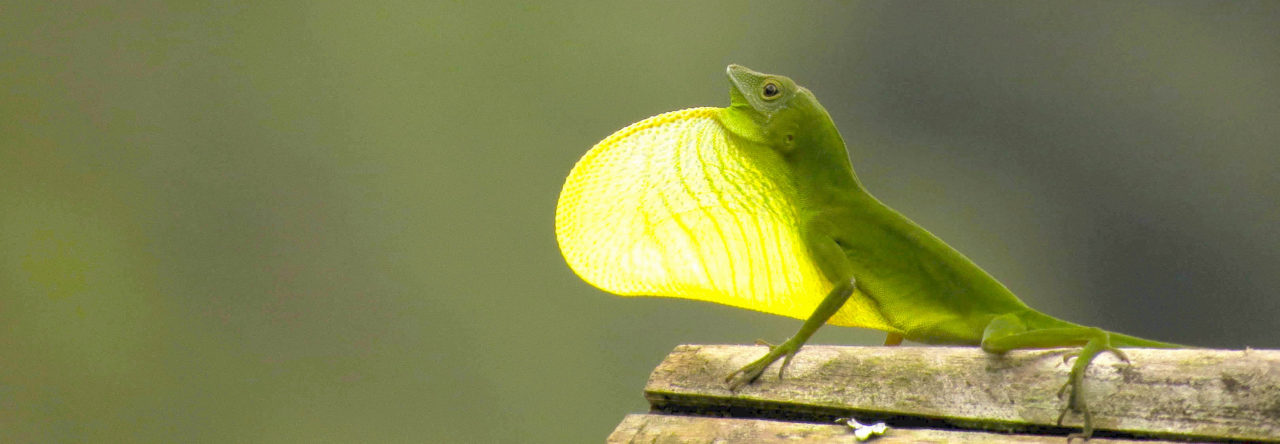
Anolis apletophallus from Panama, a well-studied species from the Panama mainland.
Over the past 15 to 20 years, the study of evolution has undergone something of a paradigm shift. Whereas scientists used to believe that evolution in most animals was a slow process, only observable over longer timescales, we now know that evolution is fast. Meaningful change can occur in many types of traits, including morphology and physiology, in just a handful of generations of a given organism. With this shift in our understanding, many biologists have begun conducting experiments which attempt to observe evolutionary processes in action, and shed light on how evolutionary mechanisms play out in the real world.
Dan Nicholson, a student in Rob Knell’s lab at Queen Mary University of London, worked with Mike Logan and a team of researchers to do just this in a tropical anole, Anolis apletophallus. Dan and his colleagues caught over 400 individual anoles from the mainland and introduced them to a novel environment: four small, anole-free islands formed when the Panama Canal was created. Two of these islands were similar to mainland habitats, while two had wider types of vegetation. Prior to placement on these islands, Dan measured a suite of characters of these individuals, including perch height, size, leg length, head, and toe morphology, enabling him to observe any changes in the distribution of these traits over time.
After leaving the anoles on their new tropical island homes for a year, Dan returned to recapture the survivors and measure both them and their offspring. By comparing the traits of the surviving lizards and their young with those of the population founders, Dan could observe changes in traits as well as measure natural selection on them. At SICB 2019, Dan reported that he found that anoles on islands with wider vegetation did indeed use these broader perches and that anoles also perched closer to the ground. Correspondingly, he found that toe pad size decreased and that hindlimb lengths were longer on some islands, potentially allowing lizards to better exploit lower, broader perches.
Anoles on all islands also showed a reduction in head depth. The reason is unclear, but Dan is looking into whether differences in competition or the prey community are potentially driving this pattern. Finally, measuring selection was very difficult and analyses proved problematic, though in some cases selection estimates do seem to match with observed changes in morphological characters. Dan and his team are hoping that adding data from another generation of anoles will clarify these effects, so stay tuned!
Keep track of the latest from Dan on Twitter: @DanJNicholson
Natural Selection on Morphology in a Tropical Lizard After a Rapid Shift in Habitat Structure NICHOLSON, DJ*; LOGAN, ML; COX, C; CHUNG, A; DEGON, Z; DUBOIS, M; NEEL, L; CURLIS, JD; MCMILLAN, WO; GARNER, T; KNELL, RJ; Queen Mary University London




 \
\ The find of the trip (anole-wise) was A. allisoni – in Playa Larga
The find of the trip (anole-wise) was A. allisoni – in Playa Larga











